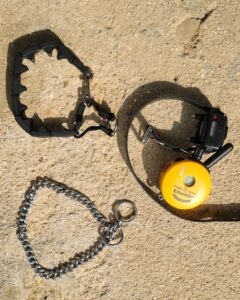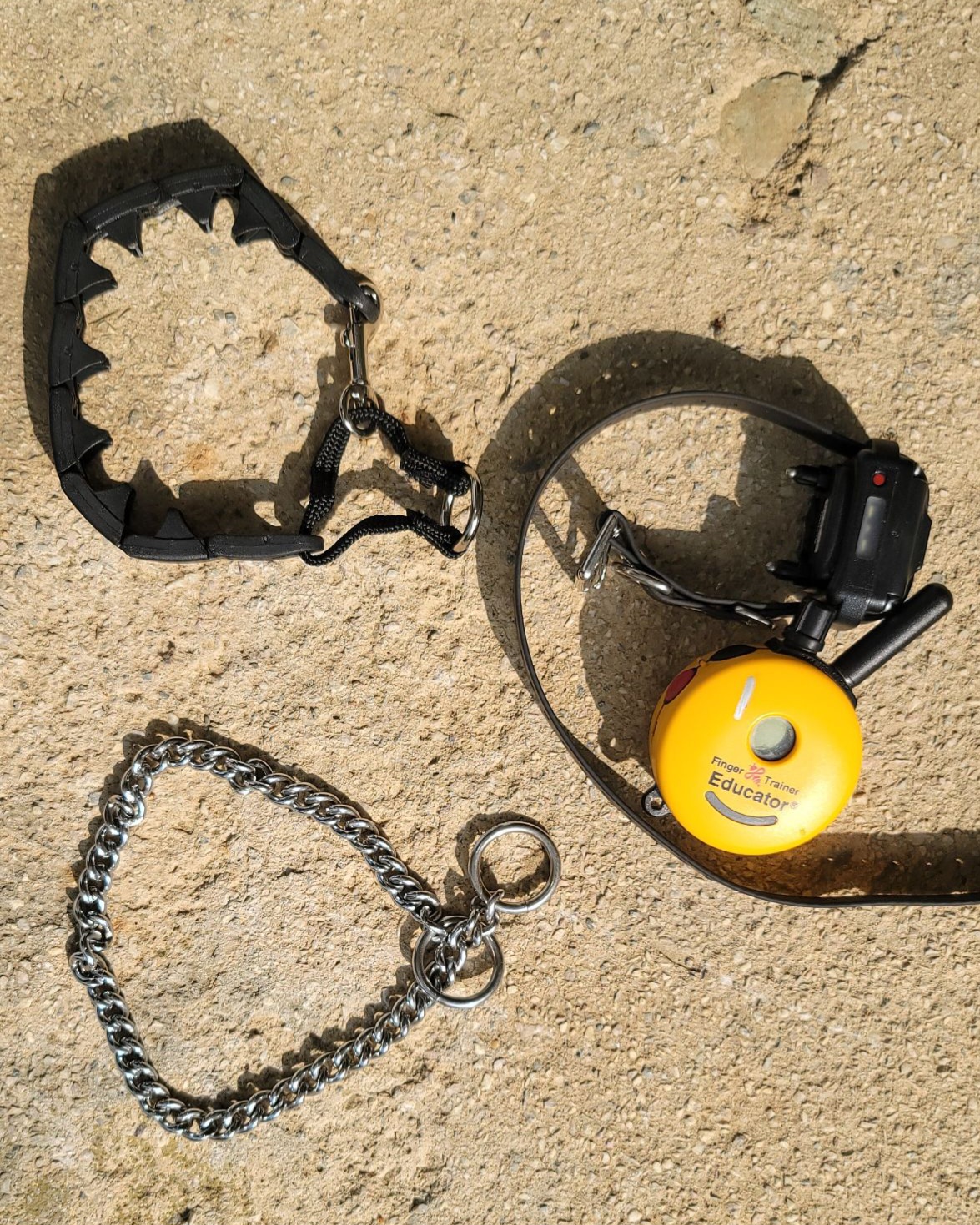 Dog training tools are generally comprised of a leash and collar that we use to communicate with dogs. Whether that collar is a buckle, martingale, chain, prong, or electronic, it is still accompanied by a leash that acts as a conduit for information that flows both ways.
Dog training tools are generally comprised of a leash and collar that we use to communicate with dogs. Whether that collar is a buckle, martingale, chain, prong, or electronic, it is still accompanied by a leash that acts as a conduit for information that flows both ways.
People tend to respond by jerking on the leash when the dog pulls. The dog usually pulls harder. The harder the dog pulls, the volume of the pressure generally increases.
What people don’t realize is that they are creating that pressure, and the dog is simply trying to escape it. Dog training tools don’t train dogs. They simply facilitate the training.
We have all seen the dog scrabbling at the end of a leash in a frenzy to get anywhere but near its owner. The owner is hanging on for dear life as their dog vaults down the street, executing the best impression of the Naruto run, choking and gagging like they are going to pass out. The owner blithely follows along behind because they don’t comprehend that they are actually reinforcing pulling behavior.
The dog is secured by an ever shortening leash, held in a death grip by the bewildered human, who has absolutely no idea that they are contributing to the erratic, hysterical pulling simply because they are pulling back, or at least, continuing to create resistance through the leash.
They never allow the dog the opportunity to escape the pressure.
I have yet to meet a dog that didn’t have a powerful oppositional reflex. The very first thing a young dog does when the leash is attached to the collar around its neck is to fight it. People tend to use different dog training tools as leveraging devices, thinking more pressure or discomfort will help control the dog better.
That never works out well.
It’s our job to teach them how to accept the leash and collar, and to not oppose pressure.
Throughout training, we apply pressure in a variety of different directions using a variety of different dog training tools. It’s important to identify how pressure helps dogs comprehend what it is we ask of them in contextual ways.
When we teach sit for example, the leash and collar are held in such a way that we leverage pressure in an upward pattern with the collar, and downward with a hand on the dogs’ rump simultaneously. Our message is “sit!” The dog learns how to do this because physics dictates the dog do so, in order to alleviate the pressure.
Training creates a series of signals that alert the dog to a required response.
Every behavior we teach is through the application of some form of directional pressure.
To the dog, the signals he registers are the hand placements that preempt that application; the hand placement for the sit cues the dog that sit is expected, before the command is even uttered. Same for down, stand, and stay. Our practiced movements become cues that the next event requires a specific form of participation.
What people don’t realize is that dogs read the context of that pressure literally.
If the dog has been conditioned that upward pressure is “sit,” applying upward pressure in any other context becomes confusing. If a dog is learning “down,” it would make no sense to the dog if the pressure was being delivered in a way that draws its motion in any other direction but downward.
Training should occur in a way that creates a common language between humans and dogs. The training isn’t so much to “fix” dogs, but to give humans a means of overcoming the communication barrier between the two species. We may be endowed with speech and opposable thumbs, but dogs are gifted with a sensitivity that defies our cumbersome, inelegant attempts at communication.
We hobble dogs with a variety of different dog training tools and yank them around without observing what they are trying to tell us.
The training tools we use to communicate are there to help broadcast our meaning in a salient way. By careful manipulation of directional pressure, we can help dogs understand how to move and when. It’s when that directional pressure is contradictory, do we see confusion or conflict.
The leash is there to prevent escape or avoidance. It doesn’t really need to do much more than be attached to a dog and a thoughtful human. The type of collar determines the amount of pressure applied to the dog at any given point.
Directional pressure isn’t initiated as punishment. It’s simply a tactic to help a dog determine how to move in order to relieve that pressure. It’s not the volume that matters as much as the direction and the constance. Rarely should it have to increase, and it should never be violent. It just needs to last longer than the resistance put up to oppose it.
A lot of attention is given to the concept of “pressure/release,” but precious little is spent understanding the importance of directional pressure and how it affects performance.
The context of directional pressure is singularly the most difficult concept to teach handlers, whether they have handled many dogs or are just starting out. The instinctual draw towards oppositional reflex is strong in both species. In order for our dogs to learn not to fight pressure, we need to stop creating it.

